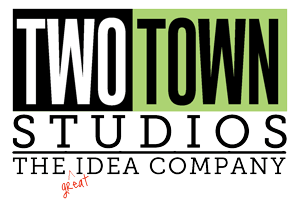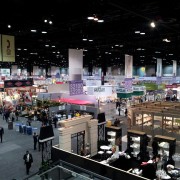Surtex… and Elephants
Surtex is over. Many people walked the aisles, a bunch stopped at our booth, we had a great show and we are going to do really well because of it.
The End.
It really can be that easy. Lost in all the post-show hoopla is the fact that Surtex is but one tool in an artist’s marketing program, and careers do not live or die because of it. There are many successful licensed artists and also many large and significant art licensees who never set foot in the place. Of far more importance is 1) the ongoing quality of your offering and 2) a well executed year-round marketing plan. Surtex is done and there will be endless postmortems, blogs and reports to digest but all (well, at least those who know) should pretty much tell you the same thing – traffic was down but the quality of attendees was up, not a lot of lookie-loos, and the licensees were focused and ready to commit. It was a decent show, full of pretty good to great art without a lot of clunkers, not a record setter but a nice solid three day event.
We did not talk to many artists as we stay pretty busy, although we heard they were out in force and only one (it still happens!) marched right up into the middle of a meeting and started pitching – to all of us, client included. Funny in retrospect but not particularly so at the time. There was also the usual coterie of former exhibitors who seem to feel they now have the right to work the show aisles instead of actually paying for a booth, a position I will never understand. They clearly are not there to evaluate the “possibility of exhibiting” so I question why management grants them access. I would also extend that line of reasoning to those artists who are on their 2ndor 3rd (or greater) year walking the show while still claiming to be “thinking about” exhibiting. Seriously? Nobody’s buying that – either get a booth or stay home.
Speaking of things I don’t understand, there was some interesting discussion about the agents who charge their artists to be on the walls of the booth. Normally I would be of the mindset that how someone runs their business is not my business, but then I’m not usually one to ignore the elephant in the room. The amount charged can vary widely, however one agent reportedly collects a 4-figure fee to be on the wall of the booth – a 10 foot booth with a dozen or more artists displayed, arranged 2 or 3 to a banner. Do the math – 10, 12 or 15K collected to support a 5000 dollar booth? Sure, there could be a couple of thousand dollars additional (maybe) in other expenses, however that still puts a lot of excess cash into someone’s pocket.
Brand licensing agencies have long operated on the commission plus expenses (shows, travel, advertising, etc.) model, however they charge a smaller percentage which offsets what can be significant expense billings. It is one thing to require your artists to help defray the cost of exhibiting, even though I do not agree with that practice (what’s the 50% for?), but turning those artist contributions into a profit center is reprehensible.
Anytime you are paying out money you should fully understand how it works. If it’s for a booth at a show request a full accounting of all the expenses you are “sharing” so you can see how your portion fits into the big picture. Ask for photos. When in doubt you can check with other artists or agents about what is normal practice, at least as much as there is such a thing, but no one collecting expense money from you should ever object to answering ALL your questions about where that money goes. You will need to invest in your career but first make sure your dollars are being spent wisely.
And now back to that bunch of client requests…




